Hearthstone's Luke Mancini has been hard at work today creating the concepts behind the upcoming September card back. He has chosen Faerie Dragon as the theme!
Below we've recapped everything interesting on today's concept stream and included some images of the progression of the Faerie Dragon card back. Hadidjah Chamberlain of the VFX team was also present during the stream to help answer questions and talk about this side of Hearthstone.
The fun continues on Wednesday and Thursday this week over on the PlayHearthstone Twitch channel!
| West Coast PDT (UTC-7) | East Coast EDT (UTC-4) | Europe CEST (UTC+2) | |
| (DONE) May 18 - Concept | 13:00 | 16:00 | 22:00 |
| May 20 - Progress | 13:00 | 16:00 | 22:00 |
| May 21 - Finalizing | 13:00 | 16:00 | 22:00 |
Card Back Rough Sketches
Luke came to the stream with a few different ideas for the September card back. Ultimately he decided on the Faerie Dragon sketch.
- Luke thinks that Faerie Dragon would be a fun card back because of its long history in Warcraft.
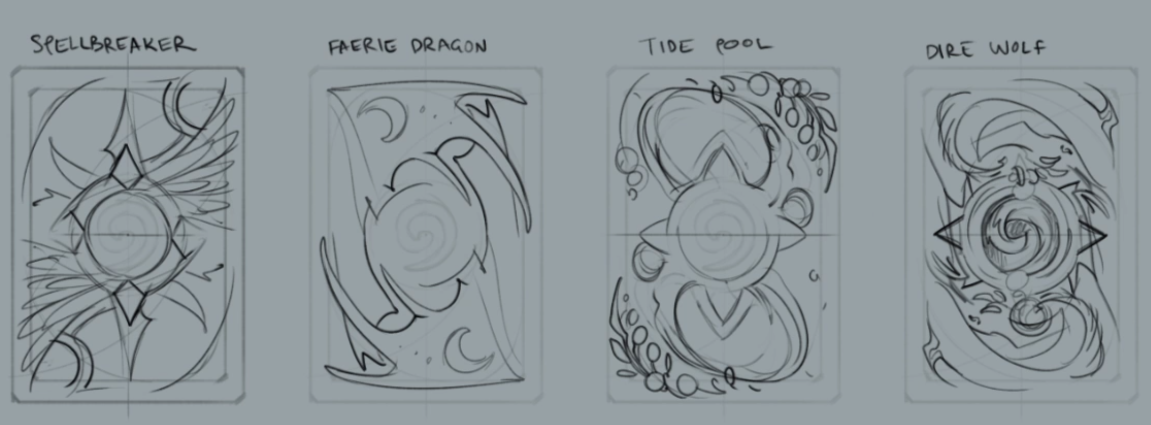
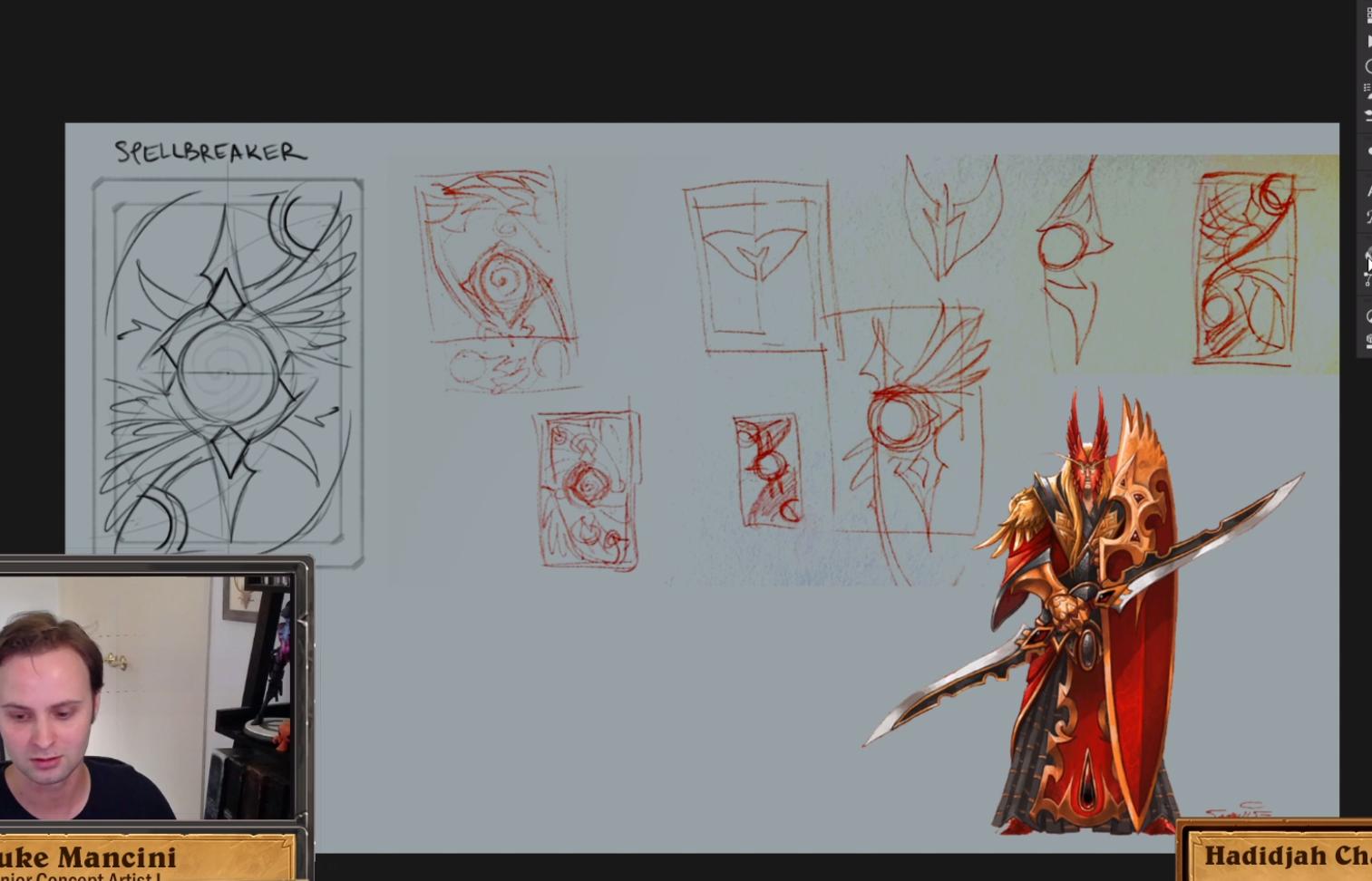
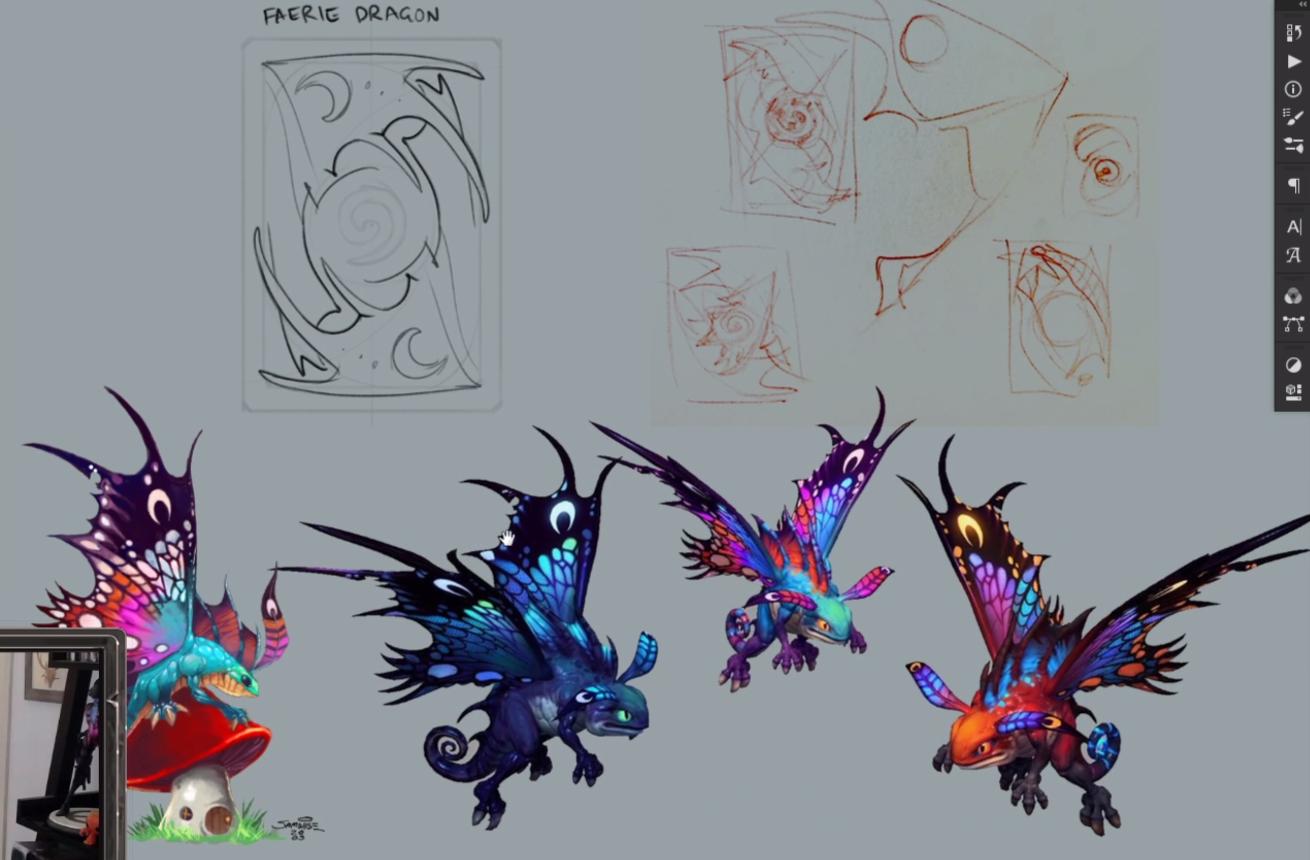
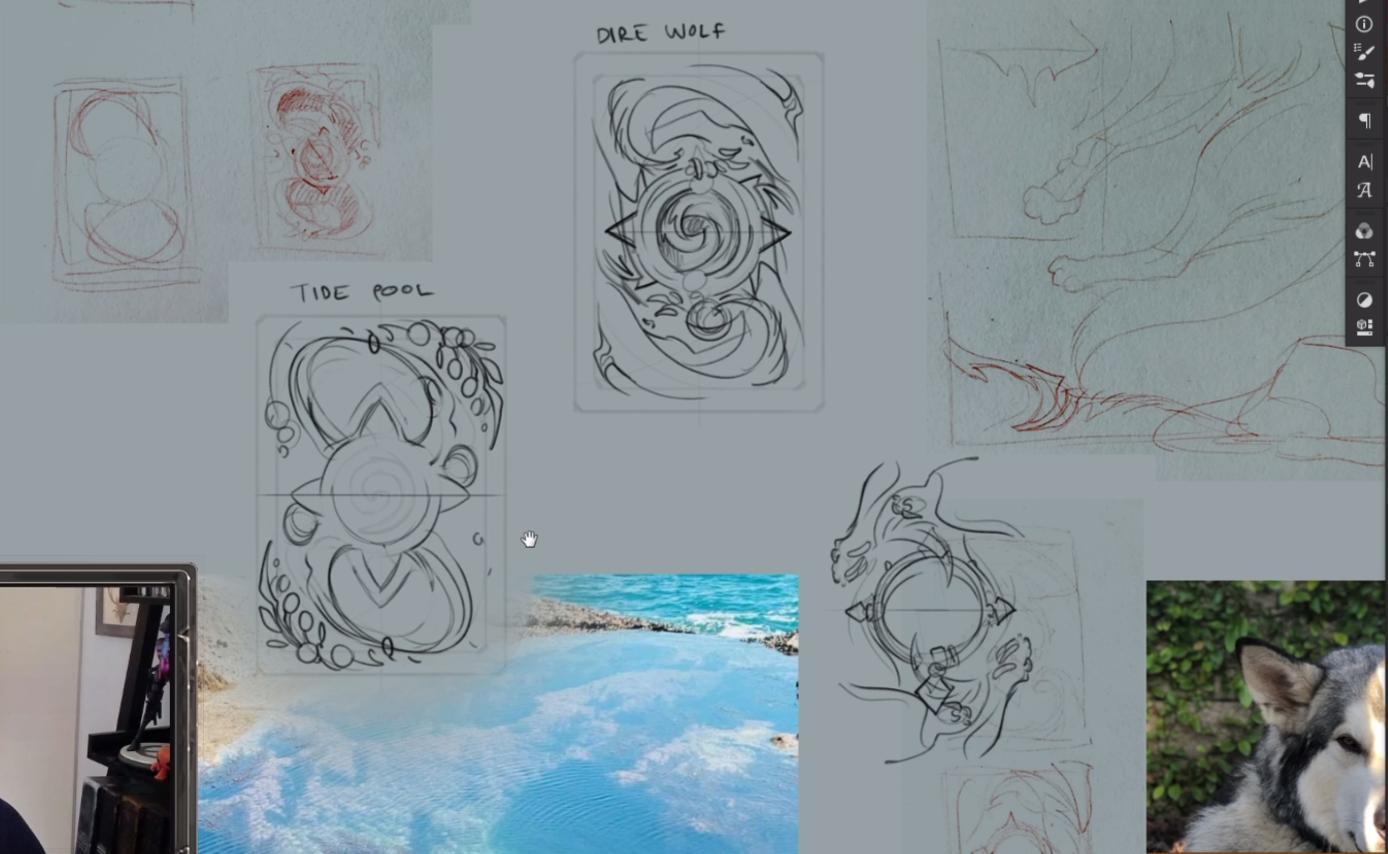
Faerie Dragon Card Back Concepts
Here is how the Faerie Dragon Card Back progressed through the stream.
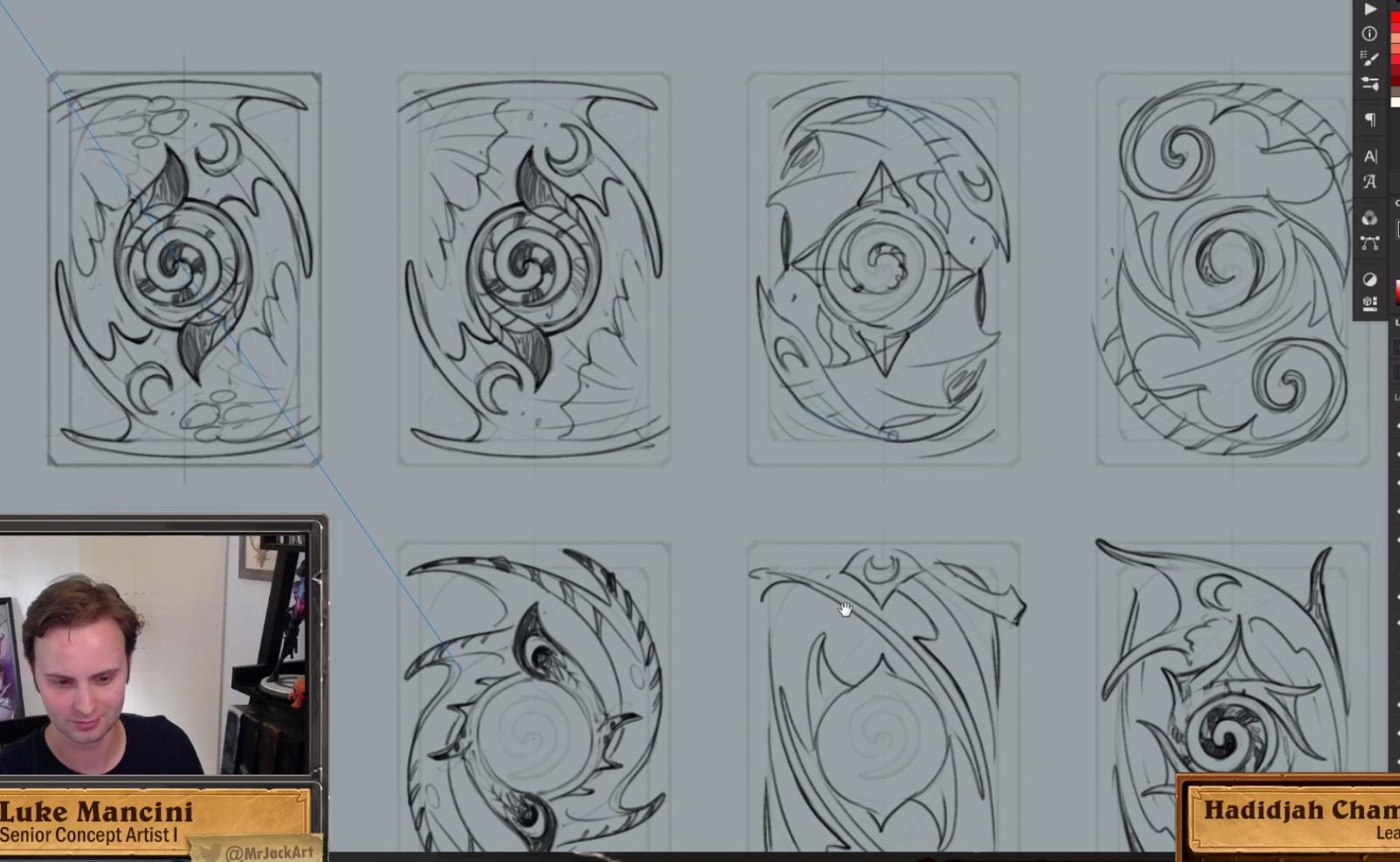
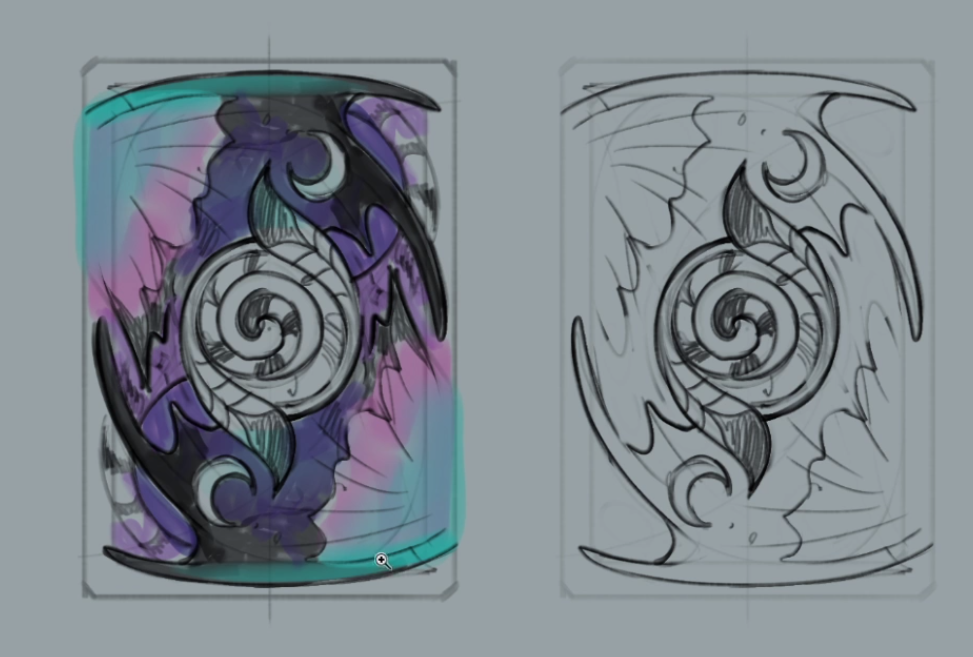
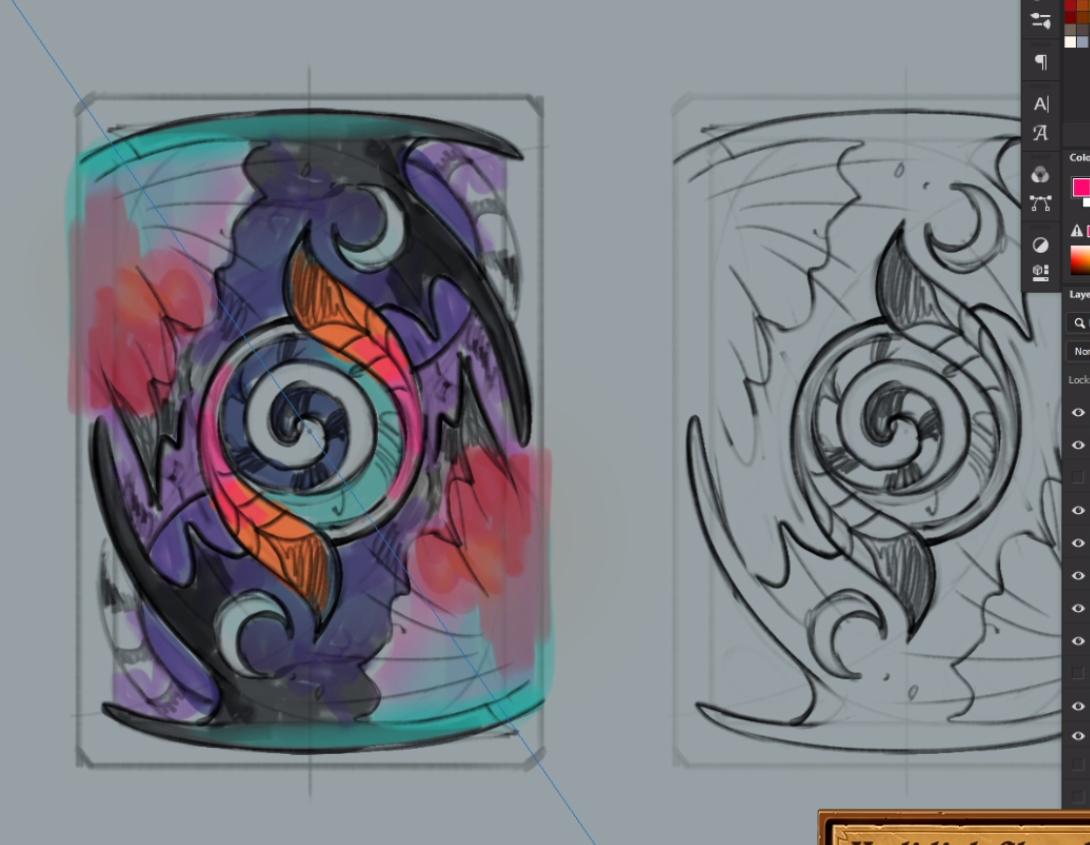
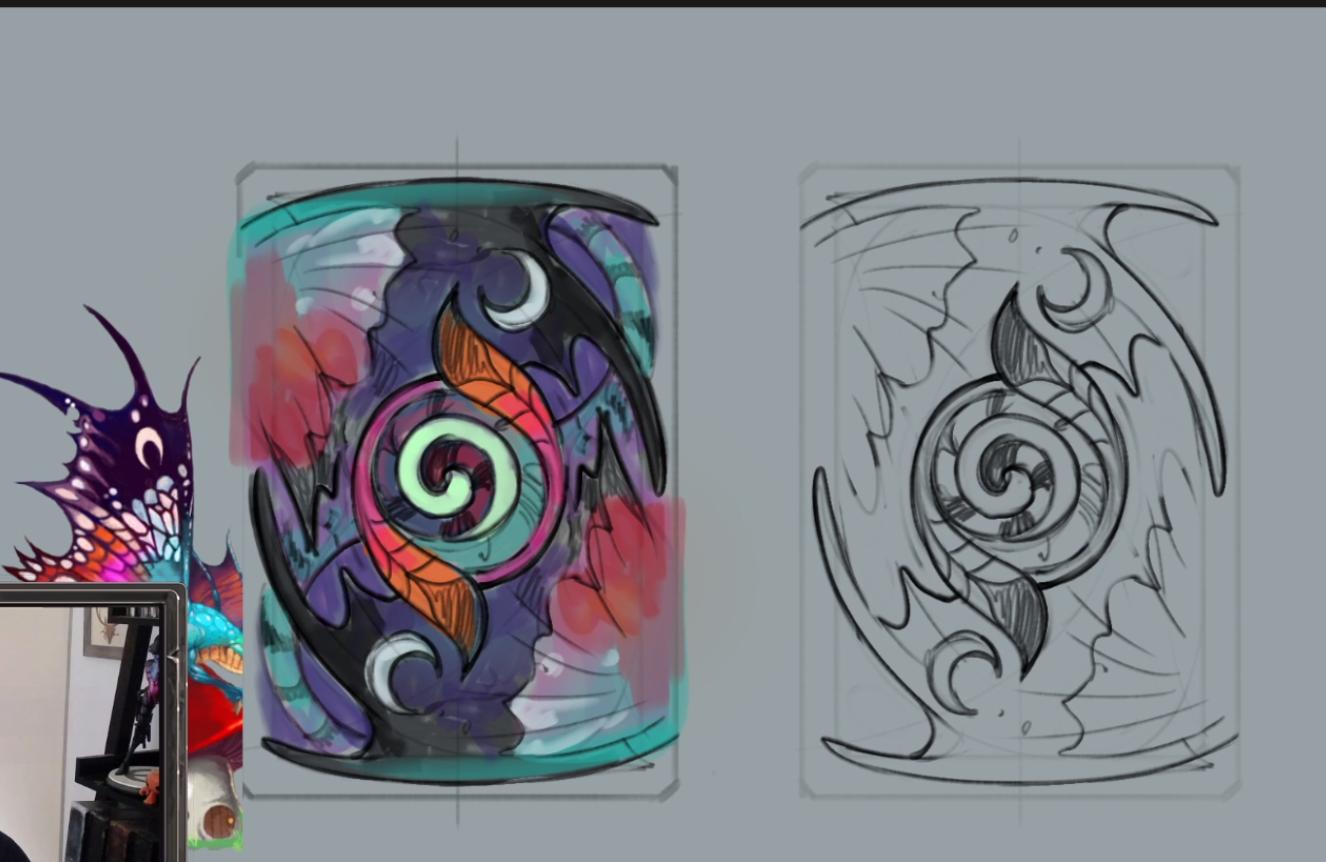
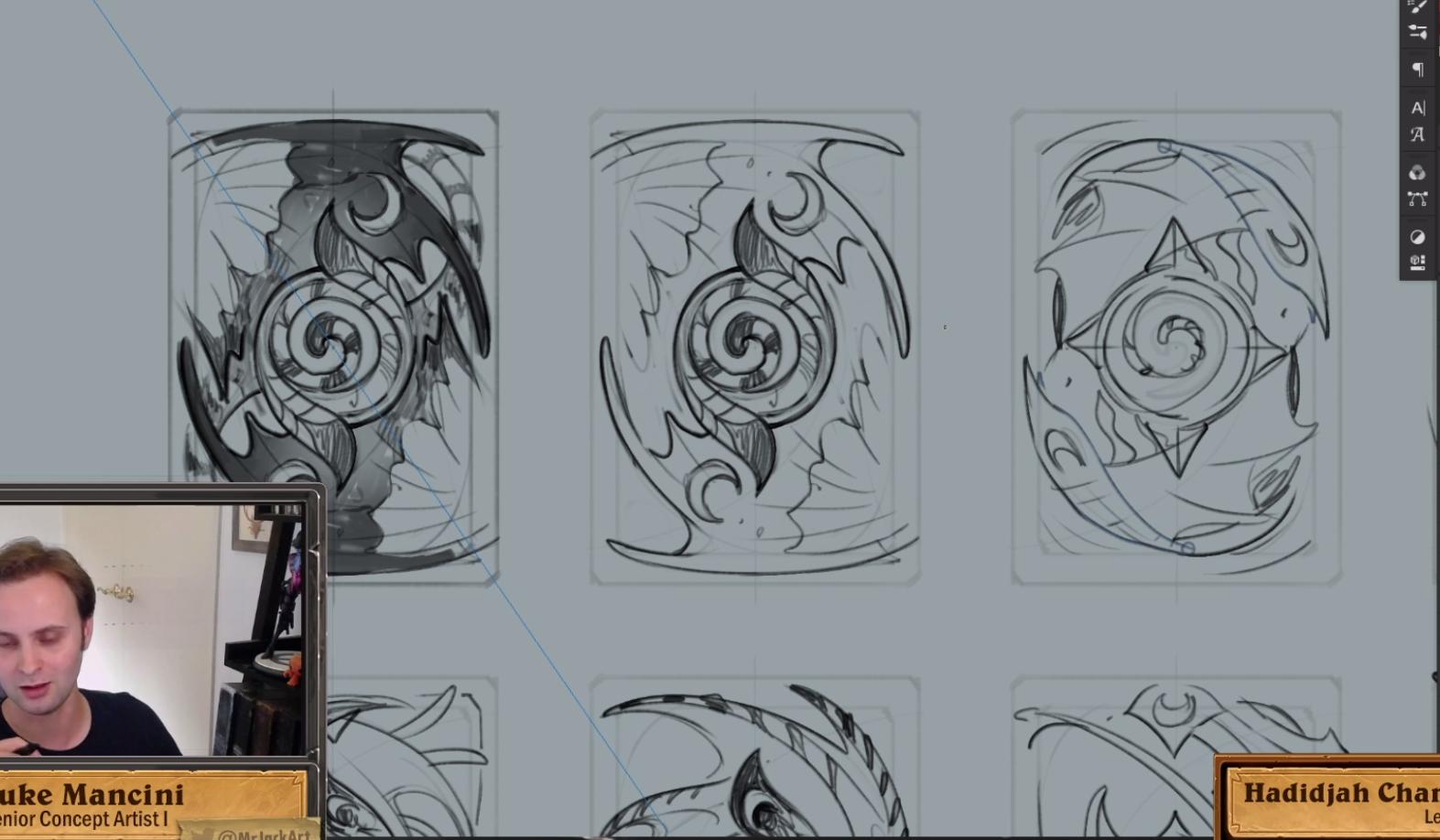
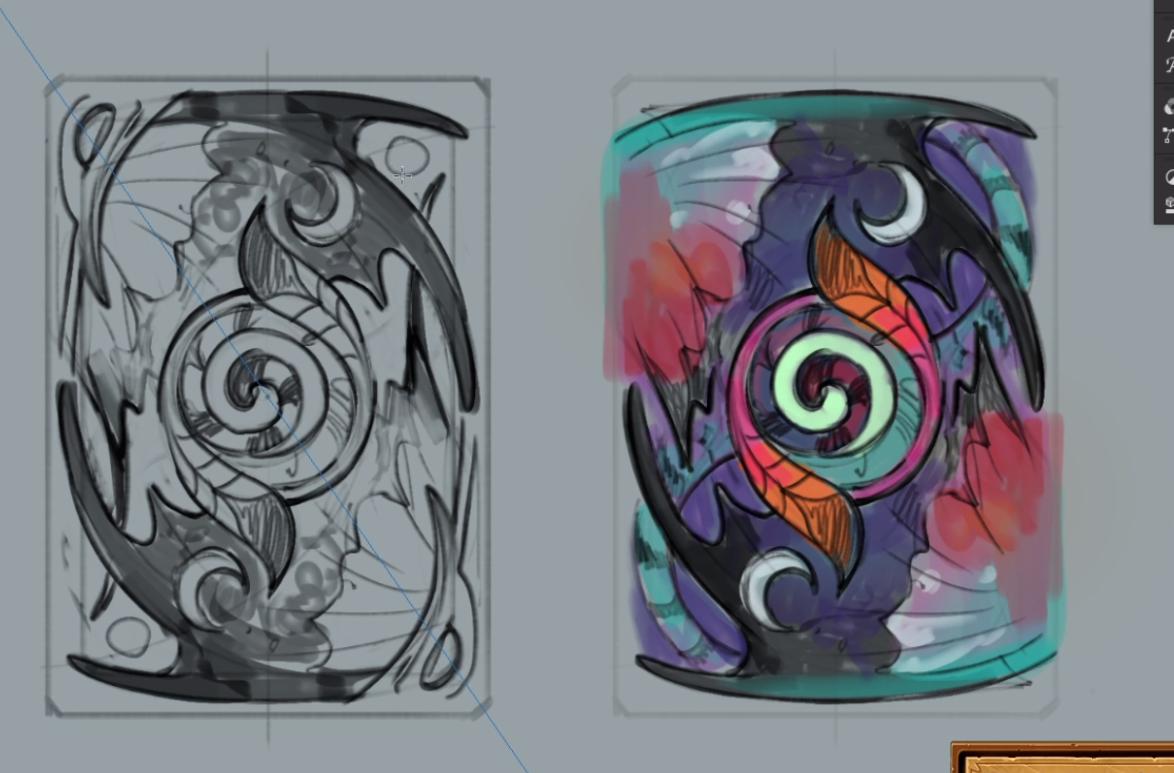
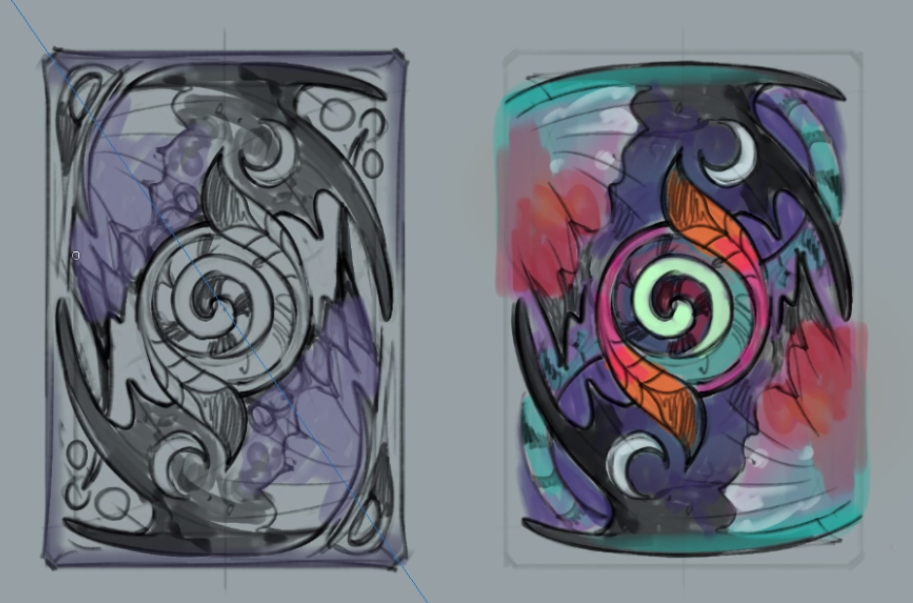
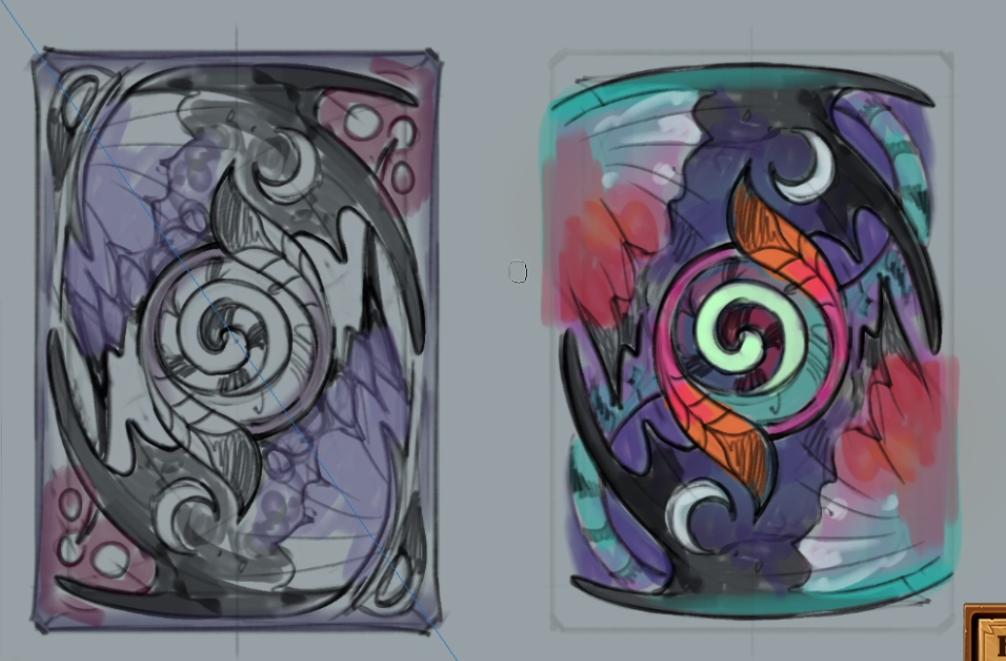
Card Back Art Stream Day 1 Recap
Here's everything interesting that was talked about on stream.
Hearthstone Card Back Design
- This is the first card back that Luke will have designed for the game.
- Card backs always need to have the Hearthstone swirl but not necessarily the compass rose.
- The corners always have 2 large sweeps and 2 smaller rounded corners.
- Designs should be rotationally symmetrical.
- They like card backs to feel like they are 3D and not just paper.
- Card back concepts usually take a couple of days to get through.
- A card back from start to finish is around a 2-week process. It depends on how much is going on with other duties within the team.
- The symmetry tool that Photoshop now has is very helpful for designing Hearthstone card backs. Thanks, Adobe for adding it!
- 3D artists handle the modelling of the card backs based on the 2D creations.
- The textures are created in photoshop and the shaders will use a few texture masks for each of the different effects.
- Certain parts of the card back model can be broken up so they can apply different effects in certain areas.
- Jumping into color early can help work out some of the compositional details.
Hearthstone Art Tech
- A lot of the golden animations are done in flow maps - taking a flat texture and letting you animate the texture around via UV distortion (sort of like smudging it).
- Illustrator has been used to help make these flow maps.
- Magic effects on card backs use an RGBA Mask (texture with 4 alpha layers) with custom textures to make the effects.
- Most things in the game use the same assets on all platforms.
- Certain textures do get scaled-down on some devices or quality settings may be adjusted for performance. (Some UI is changed on mobile, of course)
- They always consider how assets will look on both desktop and mobile.
- The Priest heal "gold buff" is the most used VFX in the game. It is used at least 137 times now.
Hearthstone's Art Team
- They don’t use vector-based programs much - raster all the way.
- Logos and typography are done in vector programs but it is a very small amount of the work. Another team in Blizzard works on much of this.
- Unity is used for a lot of their work.
- Maya is used for some 3D stuff though any 3D program team members are comfortable with can be used.
- Most of the team uses Wacom Cintiq devices. The others, by preference, still use regular Wacom drawing tablets.
- VFX does the animations for the game. Legendary animations, card pack animations, golden animations, and spells are good examples.
- The 2D team works on a lot of the concepts, style guides, and card art.
- The 3D team models the boards, clickables, and effects on the card backs.
More on Hearthstone Art
- Hadidjah says there are still some hilarious pieces of art that were made during The Boomsday Project that haven't been used yet. Some have found places though.
- Each expansion has a new style guide for card art. This ensures art that comes back from all the outside artists will fit together well.
- The FX team works on adding more Legendary Classic card animations when they have extra time. They get very excited when they have the time to work on them.
Learn More About Luke Mancini
Learn more about Luke. Here's what we've learned about him from today's stream.
- His favourite card back is the Dark Wanderer card back from the Diablo Tavern Brawl.
- Works almost 100% in Photoshop. Sometimes he needs to use Unity but not very often.
- Luke got to Blizzard by creating a lot of Fan Art.
- He started playing Blizzard games with StarCraft.
- He wasn't happy with how little information was coming out with StarCraft 2 when it was first announced. He started creating a ton of fan art surrounding StarCraft 2 in what he hoped he was getting.
- Luke got noticed by the StarCraft team through his fan art and was encouraged to apply to a concept artist position for another team. He unfortunately didn't get a reply back.
- A few months later, Luke was given a phone call from the StarCraft 2 team and they asked him to interview and do an art test to join their team.
- Continuing to create fan art and showing your passion for it can be quite helpful.
- Luke didn't think he could go from talking about StarCraft 2 at university when it was announced and then joining the team before it had launched.
- One of the most challenging things he has done for Hearthstone was drawing Scaled Nightmare. It was very fun but it went through many iterations and time to get right than originally expected.
- Was responsible for all the critters found in StarCraft 2.
- While Luke was on the StarCraft and Heroes of the Storm teams, he worked on Hearthstone art outside of work. He also did some art on WoW TCG.
Learn More About Hadidjah Chamberlain
Learn more about Hadidjah. Here's what we've learned about them from today's stream.
- First worked as a technical artist - a bridge between scripting and art.
- Prior to working at Blizzard, they were an environment artist focusing on level construction.
- As an environment artist, the FX team they were working with was very busy with their work and Hadidjah needed more FX for destructible objects that were being worked on.
- A member of the FX team taught them how to create a basic effect and Hadidjah had a lot of fun doing it which really got them into it.
- Learning more about FX through online tutorials is what really made Hadidjah decide to change over from technical artist to FX.
- They applied to Blizzard onto the Heroes of the Storm team initially. "Completed bombed by art test".
- They got a job at another studio before coming to Blizzard, improving their portfolio.
- After seeing art talks on Hearthstone, Hadidjah thought the style was really cool, fell in love with the game, and then applied as soon as an FX position opened up.
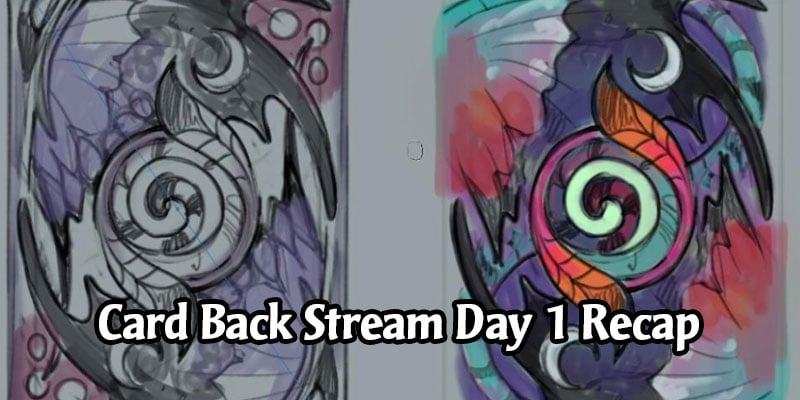
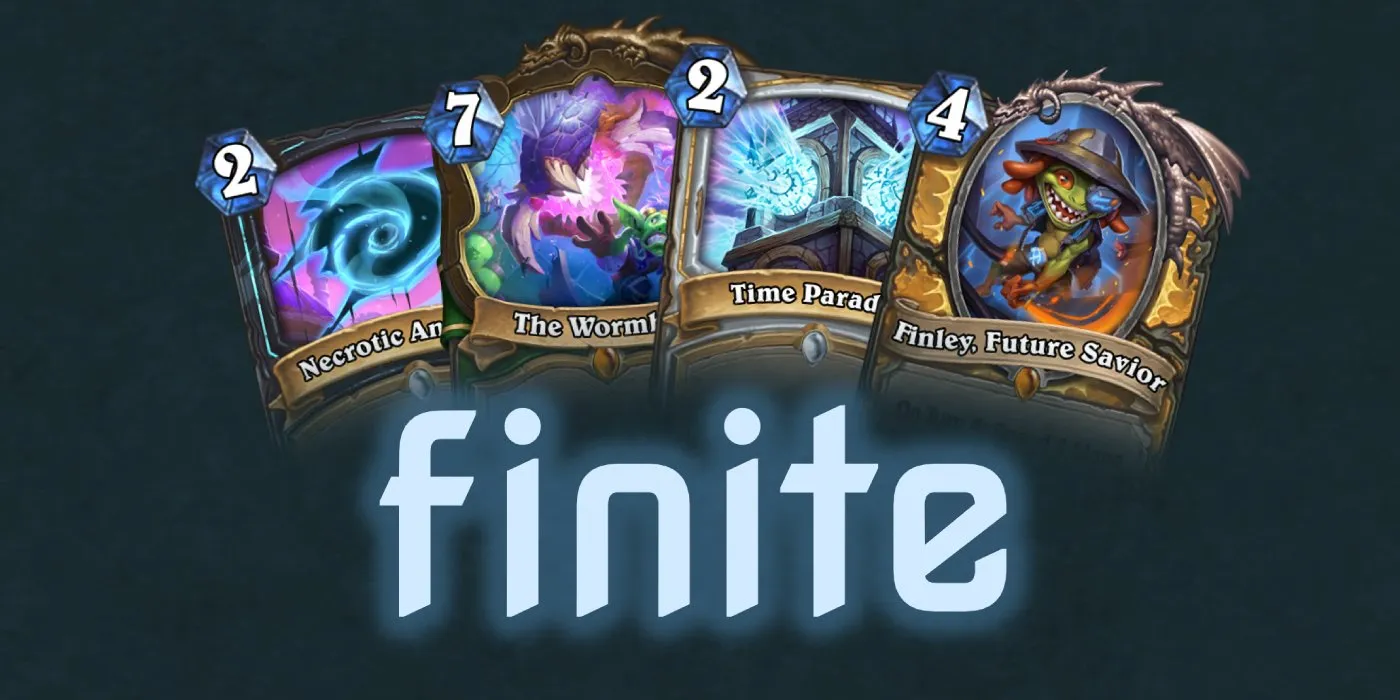
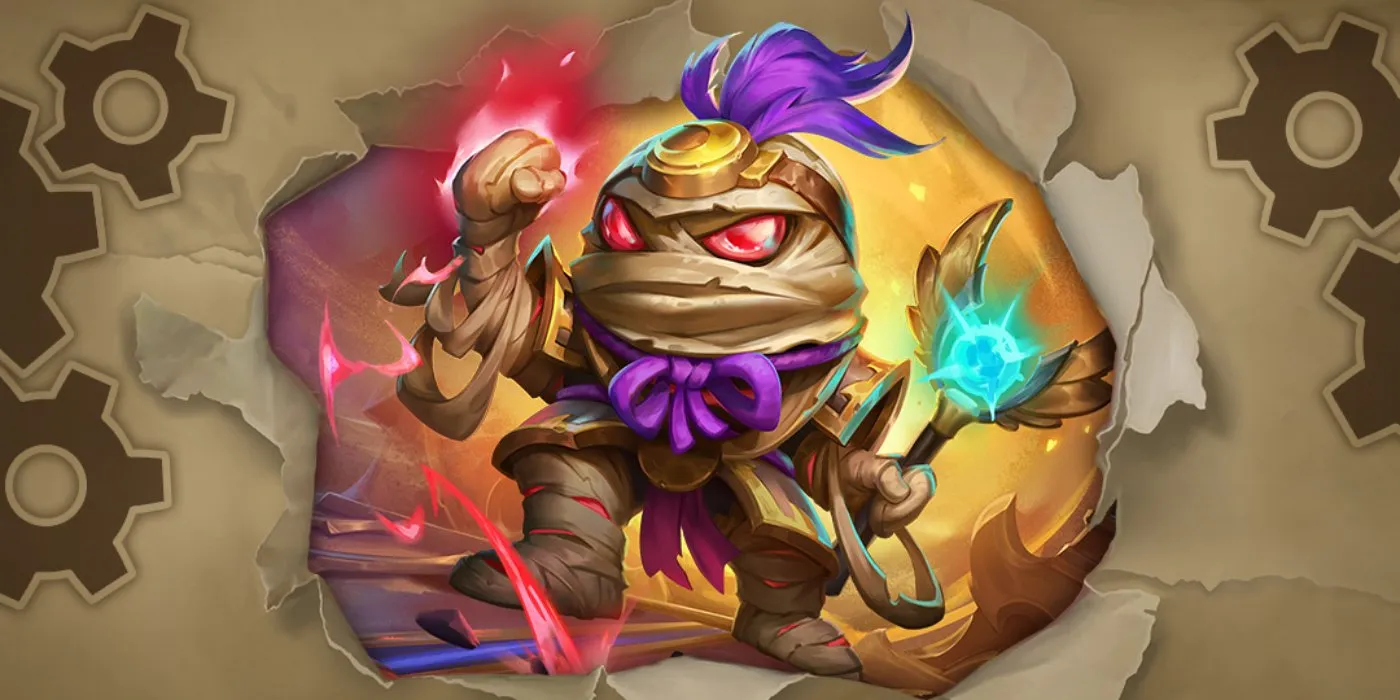
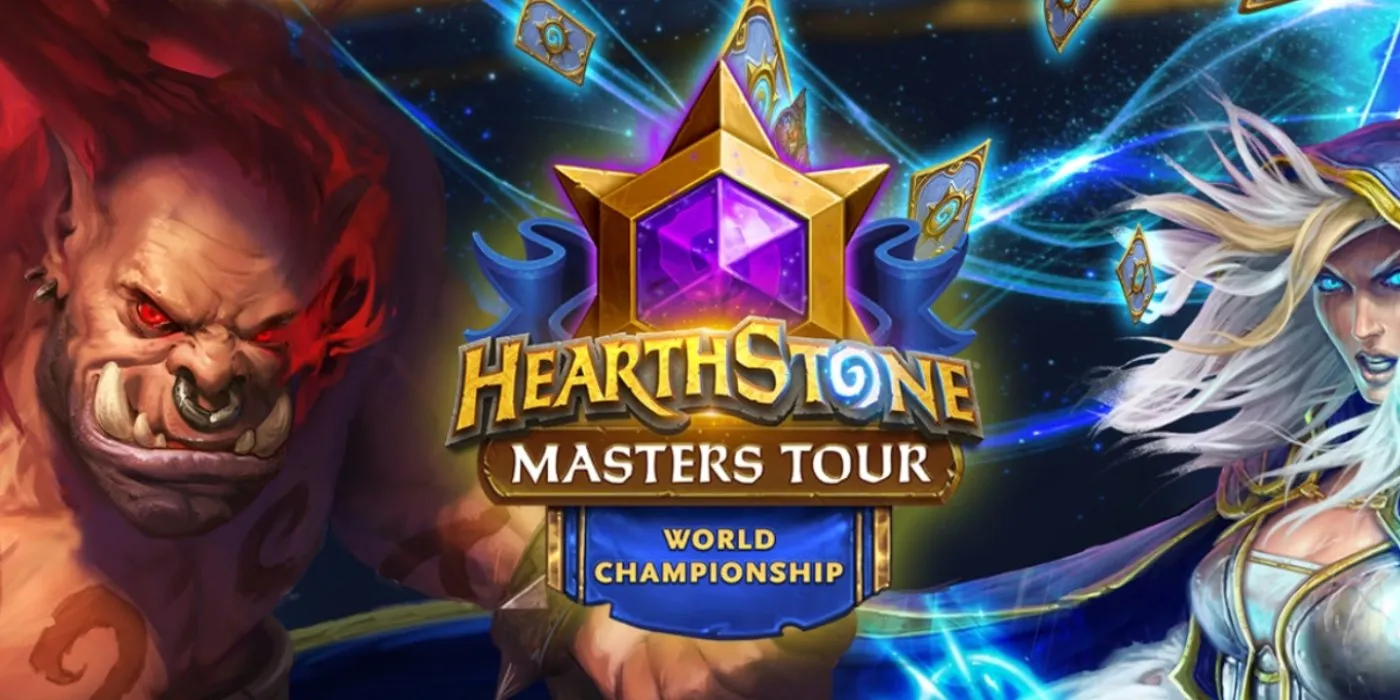
Comments
I had always thought that these card backs were similar to the art on the cards like MTG: a full size piece of art that was shrunk down to fit scale.
Just had to mention how happy I am about the correct gendering in the article <3
Faerie Dragon is a theme that could end up being ridiculous or sick af.
I'm curious to see how this ends up.
I'm hyped "Spellbreaker". Is this one comes out monthly seasons too? If its, when?
This was just one of the ideas thrown around for the September card back. We don't know if the other ones will ever happen.
This was one of the coolest pieces of content Blizzard has ever done. I'm hoping they will continue to build on this and open up some more development processes, letting the community watch.
Can't wait for the next two streams!
I think Faerie Dragons are annoying little shits (looking at you, Brightwing), but they're certainly colorful and that makes for a good cardback.
You've made a terrible mistake.
my ears... are gone.